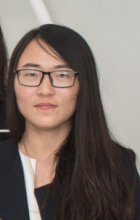Spring 2019 PhD Seminar
featuring Mojtaba Haghighatlari and Yuqi Zhu
Wednesday May 8th, 2019
Mojtaba Haghighatlari
Hachmann Lab Group
Machine Learning for molecular modeling and discovery
In this presentation, I highlight recent developments in the application of machine learning for molecular modeling and discovery. After giving an overview of the foundations, components, and workflow of a typical supervised learning approach for chemical problems, I showcase areas and state-of-the-art examples of their deployment in our research. In this context, I discuss how machine learning relates to, supports, and augments more traditional physics-based approaches in computational research.
Wednesday, May 8, 2019
- Time: 11.00 AM
- Location: 206 Furnas Hall
- Seminar Flyer

Mojtaba Haghighatlari
PhD Candidate
Hachmann Research Group
Yuqi Zhu
Neelamegham Lab Group
Genome editing of primary neutrophils derived from CD34+ human hematopoietic stem cells: CD44 is a physiological human neutrophil E-selectin ligand
Neutrophil trafficking at sites of vascular inflammation is mediated by a multi-step cascade that includes initial cell recruitment, rolling, cell activation, firm adhesion and finally transmigration across the vessel wall. Here, whereas E- and P-selectin expressed the stimulated vascular endotheium mediate the primary capture of neutrophils from flow, L-selectin expressed on previously recruited leukocytes facilitate secondary tethering to amplify cell recruitment rates. The ligands of the selectins expressed on neutrophils are glycoproteins and glycosphingolipids that are post-translationally synthesized in the cellular endoplasmic reticulum and Golgi compartments. The study of selectin-ligand interactions is important since similar process that mediate neutrophil recruitment to sites of inflammation also facilitate lymphocyte homing to lymphoid organs, hematopoietic stem cell migration to the bone marrow following transplantation, and cancer metastasis to heterologous tissue. While PSGL-1 (P Selectin Glycoprotein Ligand-1, PSGL-1) is established as a major P- and L-selectin ligand on neutrophils, the identity of the physiological E-selectin ligand(s) remains unknown.

Yuqi Zhu
PhD Candidate
Neelamegham Research Group